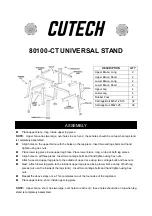
Data Protection
Data Block Guard
When a write request is issued by a server, the data block guard function adds check codes to all of the data that
is to be stored. The data is verified at multiple checkpoints on the transmission paths to ensure data integrity.
When data is written from the server, the Data Block Guard function adds eight bytes check codes to each block
(every 512 bytes) of the data and verifies the data at multiple checkpoints to ensure data consistency. This
function can detect a data error when data is destroyed or data corruption occurs. When data is read from the
server, the check codes are confirmed and then removed, ensuring that data consistency is verified in the whole
ETERNUS AF.
If an error is detected while data is being written to a drive, the data is read again from the data that is
duplicated in the system memory. This data is checked for consistency and then written.
If an error is detected while data is being read from a drive, the data is restored using RAID redundancy.
Figure 7
Data Block Guard
System memory
2
1
2
3
Controller
Write
A0
A1
A2
User data
A0
A1
A2
User data
CC: Check code
A0
CC
A1
CC
A2
CC
Read
Written data
A0
CC
A1
CC
A2
CC
A0
CC
A1
CC
A2
CC
1.
The check codes are added
2.
The check codes are confirmed
3.
The check codes are confirmed and removed
Also, the T10-Data Integrity Field (T10-DIF) function is supported. T10-DIF is a function that adds a check code to
data that is to be transferred between the Oracle Linux server and the ETERNUS AF, and ensures data integrity at
the SCSI level.
The server generates a check code for the user data in the host bus adapter (HBA), and verifies the check code
when reading data in order to ensure data integrity.
The ETERNUS AF double-checks data by using the data block guard function and by using T10-DIF to improve
reliability.
Data is protected at the SCSI level on the path to the server. Therefore, data integrity can be ensured even if data
is corrupted during a check code reassignment.
By linking the Data Integrity Extensions (DIX) function of Oracle DB, data integrity can be ensured in the entire
system including the server.
The T10-DIF function can be used when connecting with HBAs that support T10-DIF with an FC interface.
2. Basic Functions
Data Protection
32
Design Guide
Содержание ETERNUS AF S3 Series
Страница 204: ......
















































